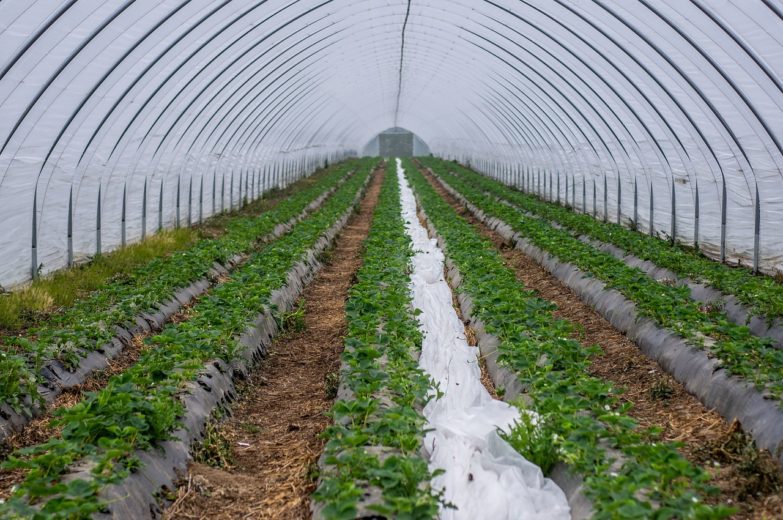
Sustainable Farming Methods for Crop Care
We are reader-supported. When you buy through links on our site, we may earn affiliate commission.
Sustainable farming is beneficial for both the planet and crop yields. Agriculture is a booming industry, but despite its connection to nature, people don’t always associate it with environmentalism. Large-scale farming has taken sustainability out of agriculture by relying on monocrops, driving deforestation and causing pollution. Commercialized growing techniques produce full harvests in less time — but at the cost of local wildlife and natural resources.
Many farmers employ sustainable farming methods to combat the effects of industrial agriculture. Plenty of alternatives exist for managing a successful farm without harming the Earth that sustains it. Learning about these approaches is only part of the solution — the other half involves putting them to action.
Filter Strips
Filter strips are sections of greenery that sit between other land features, such as a lake and a field. These patches of vegetation stop soil, sediment and other materials from entering bodies of water. It’s not unusual for soil to spread far and wide — whether by wind or rain — but creating a buffer helps to prevent this. Less debris ends up in lakes and rivers, which reduces water pollution and ecological harm.
These green zones are ideal for any farmer whose fields sit near bodies of water. Though many sustainable agriculturists are trying to decrease pesticide usage, many still rely on them for a lack of better options. If these pesticides leech into water sources, they could harm marine life or animals who drink from there. Similar concerns arise with synthetic fertilizers, which often enter streams and rivers through rain runoff. Filter strips facilitate clean, safe water, and farmers can use the extra vegetation for livestock forage.
Solar Fields
Renewable energy occupies a significant place among sustainable farming methods. Clean electricity doesn’t depend on coal-based sources, which lessens fossil fuel emissions and gives landowners the freedom to control their utilities. Solar power is a common choice due to its accessibility, low cost and easy integration. Many farmers are installing photovoltaic panels on their lands, creating fields of renewable power.
These fields provide additional revenue because farmers can sell their electricity to utility companies. Others use it within their homes to decrease bills, which leaves more money for equipment upgrades and other needs. Because these solar fields don’t utilize crops to earn profits, the soil has time to rejuvenate itself between plantings. Some growers find it beneficial to eventually convert these areas back to cropland to produce healthier plants.
Cover Crops
Farmers often use cover crops to protect and nourish their chief produce. These plants bring nutrients back to the soil and make it suitable for other types of greenery to thrive. Because these vegetables exist specifically to benefit other plants, farmers mow them down once they reach harvest-readiness and mix the organic matter into the soil. Some farmers accomplish this by tilling, though others let the materials absorb into the ground. No-till methods preserve a field’s soil aggregation, enabling better moisture retention.
Some typical cover crops include radishes, clover and buckwheat. These plants suppress weeds, introduce biodiversity and add much-needed minerals. They can also serve well in creating biofuels, which is a potentially lucrative area for farmers to invest in. Converting biomass into energy offers a new use for plant matter.
Mulching
Mulch is a natural deterrent for pests and weeds, though some varieties come in synthetic materials like rubber or plastic. Wood chips, manure and other organic types are best for anyone looking to practice sustainable farming methods. Animal waste comes with some concerns because of its contribution to methane emissions, but it’s excellent at fertilizing vegetation. Mulch also retains moisture, which means farmers can employ better water management.
Many people refer to cover crops as “living mulch” because they offer the same healthful benefits. Legumes are a popular green manure choice because they add nitrogen to the soil. This chemical is necessary for plant growth, and obtaining it from natural sources rather than inorganic fertilizers is more eco-friendly.
Drip Irrigation
Drip irrigation allows farmers to control which plants receive water, based on crop locations and predetermined scheduling. The system only waters the roots, which allows for faster growth and reduces the chances of foliage diseases caused by overwatering. Sprinklers cover extensive ground, but they’re wasteful and aren’t as precise as irrigation. These drip systems also eliminate polluted runoff, protecting bodies of water from harmful substances.
Precision agriculture grows in importance as growers search for ways to farm without depleting resources or losing efficiency. This sector merges technology and agriculture to gain information on crop performance and growing patterns. Using water metering technologies alongside irrigation techniques can ensure lower bills and less waste.
Growing Improved Yields With Sustainable Farming
As people recognize the growing importance of environmental conservation, more farmers will trade resource-intensive techniques for sustainable farming methods. Even small changes count in big ways. Earth needs all the help it can get to keep thriving. The next generations should live in a world where farmland is still abundant, and agriculture is at its peak — without today’s harmful practices.
Share on
Like what you read? Join other Environment.co readers!
Get the latest updates on our planet by subscribing to the Environment.co newsletter!
About the author

Jane Marsh
Starting from an early age, Jane Marsh loved all animals and became a budding environmentalist. Now, Jane works as the Editor-in-Chief of Environment.co where she covers topics related to climate policy, renewable energy, the food industry, and more.





